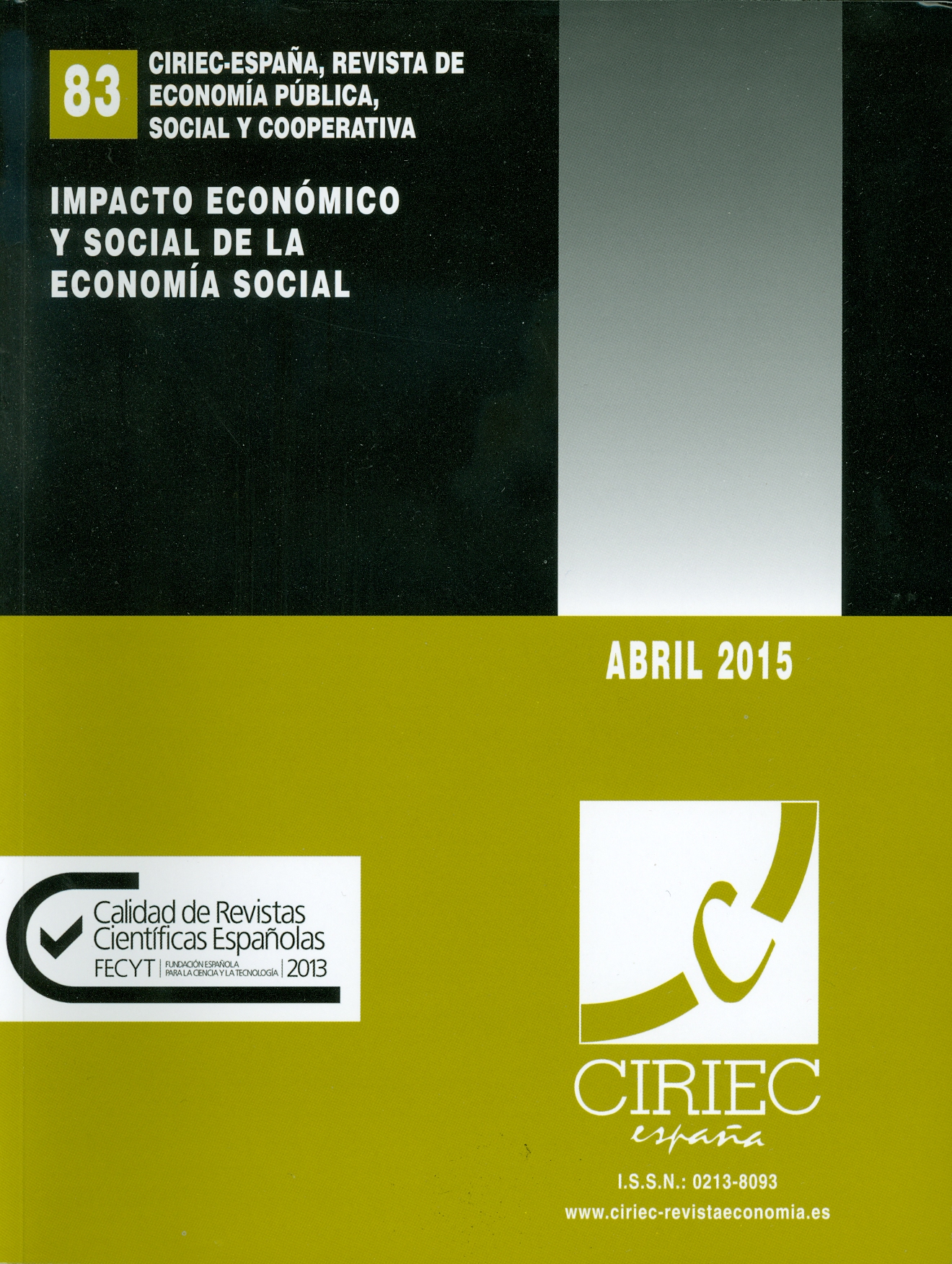Size and profitability in cooperative banking: a picture from inside a Portuguese institution
DOI:
https://doi.org/10.7203/CIRIEC-E.83.13424 Abstract
Abstract
The European co-operative banks play an important role in promoting savings and in financing small and medium enterprises. Their distinctive characteristics have allowed them to get through the Subprime crisis with remarkable resilience. Nevertheless, co-operative banks operate in a very competitive market, where they are constantly under pressure to improve their position. Increasing the size of local co-operative banks is often the strategy used to deal with this pressure. Based on data from a Portuguese co-operative banking group for 2009-11, we assess the impact of size on assets profitability, and conduct a disaggregated analysis of the ratios affecting it. Results indicate that size has an insignificant effect on profitability after controlling for the time-invariant characteristics of each local bank (i.e. caixa). This suggests that the initial higher profitability identified in small and larger caixas vis-à-vis that of medium-size caixas was explained by their specific time-invariant features. However our evidence suggests that size has an indirect effect on return through credit risk: larger caixas have better credit risk management.
 Downloads
Downloads
Downloads
Published
How to Cite
-
Abstract306
-
PDF (Español)196
Issue
Section
License
The authors of the articles accepted must renounce to the copyright ot its Spanish / English version and authorize the review to publish their articles on its Web page as well as reproduced them in different scientific data base, as established by law. Authors can deposit their article in their own personal and institutional sites.



